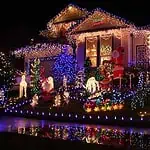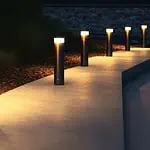If you are planning for an indoor garden setup or horticulture, the foremost thing you need right now is LED grow lights! Plants need light for photosynthesis. But are all lighting effective for plant growth? The answer is a big, big No.
LED grow lights provide the plants with an imitation of sunlight indoors. These lights emit specific light spectrums (especially red and blue) that influence plant growth. LED grow lights can be of different types based on their design, light spectrum, and configuration. Besides LED, there are other forms of grow lights, like fluorescent, HID, etc. But LED is the best option as it offers extensive customization to fit plants’ needs, is durable, emits less heat, and is highly energy efficient.
I’ve brought you a complete guideline for LED grow lights in this article. Here you will learn how LED grow light works, its types, usage, and more. So, without any further delay, let’s start the discussion-
What Is A LED Grow Light?
LED growth lights are designed to mimic sunlighting that influences the photosynthesis process of plants. They are used for indoor planting providing suitable lighting for cultivation. As these lights directly impact the growth of plants, they are known as grow lights.
These lights are usually used for industrial-level cultivation. You can also use them for horticulture, plant propagation, indoor gardening, food production, and household use. However, other options like incandescents, high-intensity discharge lamps (HID), and fluorescent lights are also in use besides LED. But Light-Emitting Diodes or LED technology is the most popular as it produces the highest Photosynthetically Active Radiation (PAR) of any light. It offers varying color temperatures, light spectrum, intensity, etc., that facilitate ideal lighting for different types of plant growth. Besides, LEDs’ versatility and energy efficiency grow light compared to technologies like HID or Metal Halide (MH), making them more popular.
How LED Grow Light Works?
To know how LED grow light works, first, you need to understand the mechanism of photosynthesis in plants. Food is essential for any living being to grow. And the same goes for plants, as they are also living objects. LED lights mimic the natural role of sunlight in photosynthesis to produce carbohydrates in the form of glucose that ensure the growth of plants. Now let’s get deep into the working mechanism of LED growth light to know how it creates artificial sunlight effect-
- Role of Sunlight in Photosynthesis
Sunlight is one of the vital elements in the food production system or photosynthesis process of plants. The chloroplast in the plant absorbs a specific light spectrum from the sunlight to produce high-energy electrons. These electrons are then used to form more stable energy that combines carbon dioxide into carbohydrates. This carbohydrate is the food or energy source that helps plants grow. Thus converting light energy to chemical energy, plants produce energy/food essential for their growth. And this same mechanism is followed in LED grow lights.
- LED Grow Light Mimicking Sunlight
LEDs use semiconducting metals to mimic the lighting effect of sunlight. These semiconductors are of two types. One is positively charged (known as a hole), while the other is negatively charged (known as an electron). The hole and electron collide when the right voltage is passed through them. As a result of this collision, it releases energy through photons following a process called recombination. The light thus produced is absorbed by plants’ chlorophyll to convert light energy to carbohydrates.
However, different plants require different light spectrums to activate their photosynthesis process. And each of these light spectrums has its individual effect on plant growth. Most plants are exposed to red and blue lights for their usual growth. But including other colors like green, deep blue, and far red can bring prominent results in plant growth too. And to meet these demands, LED growth light comes in customizable options to meet all categories of plant requirements.
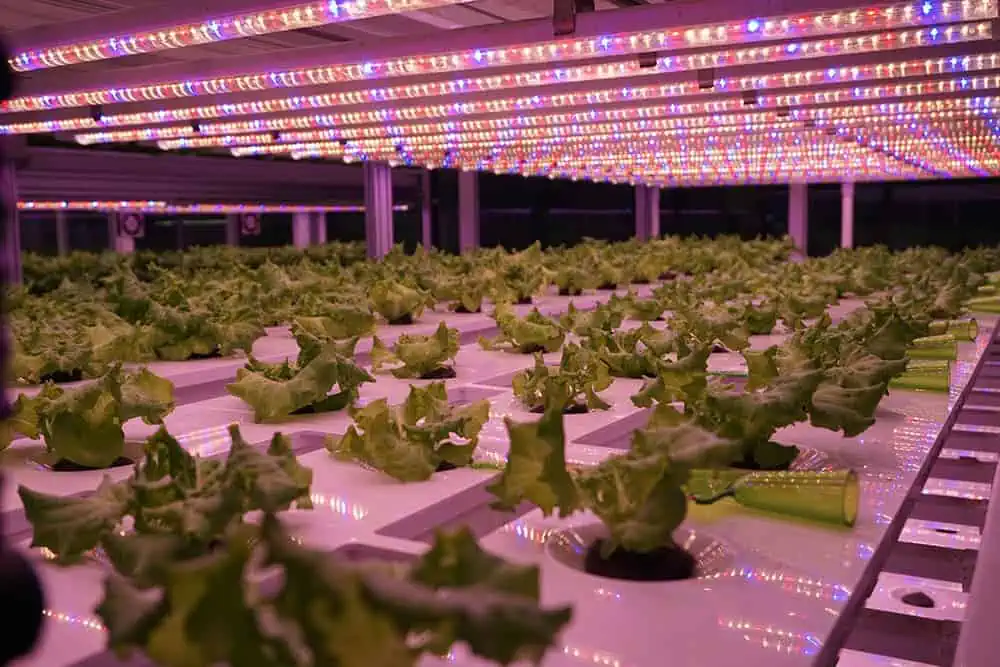
Types Of LED Grow Light
LED grow lights can be of different types based on specific considerations. Here I have categorized these lights in terms of the light spectrum, different LED technologies, and fixture designs-
Based On The Light Spectrum
LED grow lights can be of three major types considering light spectrums suitable for plant growth. These are as follows-
- Vegetative LED Grow Light: Blue Light Spectrum
The vegetative stage of plants requires a blue light spectrum to maintain the growth cycle tightly. Considering this factor, vegetative LED growth lights are designed specifically for the vegetative growth stage of plants. They provide a blue light spectrum ranging from 400-500 nm. This light wavelength promotes leaf and stem development, root growth, and overall plant structure. It further stimulates chlorophyll production and allows more CO2 to enter the leaves. Thus, vegetative LEDs grow light to support plants’ vigorous growth and photosynthesis.
- Flowering LED Grow Light: Red Light Spectrum
After the vegetative stage of plants, the flowering stage starts. This stage requires a red light spectrum to stimulate necessary hormones for flowering and fruiting. Flowering LED grow lights are tailored to meet the light requirements of the plant. They illuminate lights with a higher proportion of red wavelengths (600-700 nm). Such lighting stimulates hormone production to start the flowering process and enhances flower and fruit development. Thus flowing LED grow light triggers the transition from vegetative growth to reproductive growth.
- Full Spectrum LED Grow Light
Full spectrum LED grow lights replicate the natural sunlight spectrums providing all light wavelengths. They emit a balanced spectrum that covers the entire visible light range (380 to 760 nm). These include red and blue lights covering the vegetative and flowering stages of the plant. Besides, other light spectrums like- orange, yellow, green, UV, and far-red lights are also included in it. Thus, full spectrum LED grow light meets plants’ lighting needs for all life stages, from seedling to vegetative growth and flowering.
Based On LED Light Configuration & Technology
LED grow lights can be of different types based on the technologies used. These are as follows-
- COB LED Grow Lights (Chip-on-Board)
If you are looking for a full-spectrum grow light, COB LEDs are an excellent option. You can use them for the entire growth stage of a plant without worrying about spectrum changes. In COB LED grow lights, LEDs are closely arranged on a single board. Such arrangements allow them to provide even lighting throughout the indoor garden. It further minimizes hotspots and shadowing, ensuring that all plants receive equal light.
- Quantum Board LED Grow Lights
Quantum board LED grow lights have a large circuit board with numerous small LEDs. They usually feature a low-profile design, which allows the light to penetrate deeper into the canopy, reaching lower leaves and branches. Besides, they produce less heat than traditional high-intensity discharge (HID) lights or older LED designs. This lower heat output helps maintain a more favorable environment for plant growth, reducing the need for additional cooling equipment. Some quantum board LED grow lights also offer adjustable spectrum and intensity settings. So you can tailor the light output to specific plant requirements.
- High-Intensity LED Grow Lights
High-intensity LED growth lights are excellent for plants requiring high photosynthetically active radiations (PAR). They can deliver high light output to support vigorous plant growth and development. And this is what makes them ideal for industrial production. Besides, high-intensity LED grow lights are available in various shapes and configurations, including panels, bars, and modules. This versatility allows you to customize the lighting setup based on the size and layout of your growing areas.
Based On The Design and Pattern Of LED Light Fixture
Different types of LED light fixtures are used as LED grow lights. This factors, LED grow lights can be of different types; some major variants are as follows-
- Panel LED Grow Light
Panel LED grow lights are the most common category of lights used for indoor horticulture. Whether it’s a small-scale or large-scale indoor garden, these lights are considered standard options. They consist of a flat panel with multiple LEDs arranged in a grid pattern. The LEDs on these fixtures provide a balanced spectrum of light. They come in red, blue, and sometimes white color lighting. It may also include other light spectrums like yellow, green, and orange to provide a full spectrum of lighting.
- Vertical Farming LED Grow Lights
In vertical farming, plants are stacked in multiple layers to maximize space utilization. And vertical farming LED lights have a compact and slim design to provide sufficient lighting for such dense plant arrangements. They minimize shading and ensure that each plant receives sufficient light for optimal growth. Their small form factor allows for efficient use of space and easy integration into the vertical farming setup. These lights usually come with flexible mounting options. So, you can adjust the beam angles to your plant’s lighting requirements.
- T5 LED Grow Lights
T5 LED grow lights are an excellent replacement for traditional fluorescent lighting. They are more energy-efficient and don’t produce harmful gas like fluorescent fixtures. T5 LED grow lights are mostly used for indoor seed germination, cloning, and early vegetative growth stages. They are very lightweight and simple in design. This feature makes them ideal for small-scale setups, tight spaces, or areas with height restrictions. Besides, T5 LED grow lights are easy to maintain and more cost-effective than other lighting forms.
- Strip LED Grow Light
Strip LED grow lights are usually used as supplement lighting along with larger LED panels, or HID lights to provide additional light coverage. These grow lights are super flexible, allowing you to install them in any critical garden space. Strip LED lights are your go-to option if you have a tight garden setup with minimal space. These lights ensure all your plants get sufficient lighting to ensure proper growth. Besides, strip LED lights are highly customizable. You can contact LEDYi for customized LED strips to fit your gardening requirements. We offer OEM and ODM facilities too!
Advantages of LED Grow Lights
LED grow lights bring an extensive advantage for indoor gardening or horticulture. These are as follows-
- Economic electricity consumption
LED grow lights are highly energy-efficient. They consume about 80% less energy than fluorescent grow lights. As a result, using LED grow lights saves your electricity bills and minimizes overall gardening costs.
- Longer lifespan
The durability and robustness of LED grow lights make them the best option for indoor gardening. Where fluorescent or high-intensity discharge (HID) lights last around 10,000 to 20,000 hours, LEDs can glow for 50,000 to 100,000 hours. That is, if a LED grows light and is used for 12 hours a day, it can last around 11 to 22 years! Besides, they don’t require frequent repair and replacement. This makes your light maintenance much more convenient.
- Smaller spaces convenience
LED grow lights come in various designs and patterns that fit dense gardening environments. Vertical farming LED grow lights, T5 LED grow lights, and panel LED grow lights are excellent options here. They have a slim and compact design to install in small spaces. Besides, strip LED grow lights are an excellent option to provide supplement lighting. You can install them on any corner of the garden to ensure light reaches even the bottom parts of the plant.
- Produces minimal heat: fire safety
LED grow lights have an efficient heat sink that keeps the fixture cool while operating. This also maintains a favorable environment in the indoor garden without warming it up. Others grow light like fluorescent light and overheat quickly, causing fire hazards. But with LED grow lights, you need not worry about these factors.
- Dimming capabilities
Many LED grow lights come with a dimming capacity. They allow you to adjust the light intensity based on plant requirements. Thus, you can grow a wide range of plants with the same light setting. You will not require to change the fixture with different plants.
- Better crop quality and yielding
Different plants have different light spectrum requirements. Some may require blue lights more, while others are red. It promotes photosynthesis, chlorophyll production, and overall plant health. This eventually results in better crop quality, increased yield, and faster growth rates.
- More environment safety
LED grow lights are environmentally friendly compared to other lighting options. They do not contain harmful substances like mercury, which is commonly found in fluorescent lights. Besides, these lights are free from harmful ultraviolet (UV) and infrared (IR) emissions. Thus, LEDs ensure a safer environment for plants and growers.
Disadvantages of LED Grow Lights
Besides the long list of advantages of LED grow lights, there are a few drawbacks too. These are as follows-
- Higher upfront cost
The biggest disadvantage of LED grow light is its high upfront cost. LED lights are quite expensive compared to traditional grow lights like fluorescent and HID. Besides, there is also installation cost. However, considering the maintenance cost and electricity bill, LED offsets the initial cost.
- Limited light penetration
Plants with thick canopies require throughout lighting to ensure adequate light distribution to lower leaves and branches. But LED grow lights sometimes can’t fulfill these requirements due to their focused and directional light. Though it is beneficial regarding light efficiency, light can’t reach the canopy of dense foliage. However, you can solve this issue with supplementary lighting. For example, you can install LED strip grow lights along with LED panels or vertical farming LED grow lights. This will ensure light reaches throughout the garden.
- Risk of low-quality products
LED is the most popular and expensive grow light category. And to take this advantage, many dishonest businesses come up with low-quality lighting in the market for extra profit. As a result of this, these lights can’t deliver the needed light wavelength or spectrum. Besides, they are not durable enough and require frequent replacement. To avoid such situations, you should research the brand’s authenticity before purchasing any LED grow light.
What Is The Effect Of LED Grow Lights On Plants?
LED growth light emits different light spectrums that influence plant growth. Some spectrums are ideal for flowering plants, while others are for vegetative reproduction. Again LED grow lights can also manipulate the morphological traits to optimize plant structure. You can adjust the lighting to get your desired plant height, branching, leaf size, etc. Here I am adding a chart to show how different light spectra of LED grow lights affect plants –
| Light Color | Wavelength | Effect On Plants |
| Blue Light Spectrum | 400-500 nm | Stimulates chlorophyll productionPromotes vegetative growth, leaf development, stem elongation, and root growthAllows more CO2 to enter the leavesEnhances photosynthetic efficiencyOrient plant growth toward the light sourceTightly manage growth cycles |
| Red Light Spectrum | 600-700 nm | Triggers the transition from vegetative growth to reproductive growthStimulates flowering hormone production to start the flowering process Enhances flower and fruit developmentInfluences seed germination |
| Green Light Spectrum | 500-600 nm | Less effective compared to red and blue lightsHelp penetrate deeper into the plant canopyIt can reach the lower leaves of a plant to help them in photosynthesis |
| Far-Red Light Spectrum | 700–850 nm | Stem elongationLeaf expansion and flowering initiationInfluences seed germination Manipulate plant height and flowering timeIncrease fruit yield in short-day plants |
| Orange Light Spectrum | 590–620 nm | Encourage plants to photosynthesizeInfluences plant movement |
| Yellow LightSpectrum | 570–590 nm | Minimal photosynthetic activitySimilar to the orange light spectrum |
| Ultraviolet (UV) Light Spectrum | UV-A (315-400 nm) | Regulates various physiological processes Enhance the production of secondary metabolites |
| UV-B (280-315 nm) | Has both positive and negative effects on plantsStimulates the production of certain secondary metabolitesInfluence plant morphology,Excessive UV-B damages DNA | |
| UV-C (100-280 nm) | Not good for plants/horticultural purposesCan cause severe damage to plant tissues |
How Do I Know If My LED Grow Light Is Full Spectrum?
LED lights can be red spectrum, blue spectrum, or full spectrum. Among all these, the full spectrum is the best option. Here are some tips following which you can identify full spectrum lights-
- Check the product description and specifications: Look for terms like ‘full spectrum’ or ‘broad spectrum’ in the LED grow lights packaging product description. If you find these terms, identify them as full spectrum LED grow lights.
- Light spectrum chart: Almost all LED grow lights come with a spectrum graph or chart. A full spectrum LED light shows all visible light (380 to 760 nm), including- red, blue, green, yellow, and orange. This range also includes UV and far-red.
- Plant response and growth: Observing the growth and development of your plants under the LED grow light can also provide insights into its spectrum. For instance, you can consider plants’ healthy and vigorous growth, lush foliage production, and appropriate flowering. In that case, it indicates that the LED grow light provides suitable full-spectrum lighting.

Are LED Lights Good for Plant Growing?
LED grow lights can offer specific wavelengths suitable for plant growth. They offer customization of light spectrum and intensity to meet specific plant requirements. Besides, the slim fit design of these fixtures makes them ideal for dense gardening or vertical farming. Apart from all these, they are energy and cost-effective.
However, to consider LED lights the best option for plant growing, let’s have a comparison with other artificial plant lighting forms-
LED Grow Lights Vs. Incandescent Grow Lights
Incandescent lights are first-generation lights. Without any comparison, you can consider LED grow lights a better option than incandescent ones. Yet here is a differentiating chart for you-
| Criteria | LED Grow Light | Incandescent Grow Lights |
| Energy Efficiency | Highly energy-efficient | Consumes much more energy; highly inefficient |
| Life Span | High; last for 50,000 to 100,00 hours | Short life span; usually last for 1000 hours |
| Light Intensity | Customizable; you can adjust the light intensity according to plants’ requirements. | Fixed light intensity |
| Plant Growth Promotion | Promote healthy growth and higher yields | Less effective in promoting plant growth due to inefficient light spectrum |
| Upfront Cost | Expensive but can offset the overall costing | Cheap |
| Safety Concerns | Doesn’t get overheated, so there is less risk of fire breakouts | Has filaments that get heated, which can cause fire breakouts |
LED Grow Lights Vs. Fluorescent Grow Lights
Fluorescent grow lights are the predecessor of LED grow lights. Though it is a backdated technology, still in use. The differences between these two grow lights are as follows-
| Criteria | LED Grow Light | Fluorescent Grow Lights |
| Energy Efficiency | High energy efficiency | Moderate energy efficiency |
| Light Spectrum Customization | Fully customizable | Limited customization |
| Life Span | Longer lifespan, typically 50,000 to 100,000 hours. | Shorter lifespan, typically 10,000 to 20,000 hours. |
| Light Intensity | High | Low |
| Heat Generation | Generate much less heat compared to fluorescent lights | More heat is generated, which requires a potential cooling system |
| Suitable Growth Stage | Ideal for all stages of plants’ life cycle | Suitable for seedlings and early growth stages |
| Space and Flexibility | LED grow lights have a compact and versatile design making them ideal for tight spaces. | Fluorescent grow lights are bulkier in design and so require more space. |
LED Grow Lights Vs. HPS Grow Lights
HPS (High-Pressure Sodium) grow Lights are a popular category of grow lights that compete with LED grow lights. Here are the differences between them-
| Criteria | LED Grow Light | HPS Grow Lights |
| Energy Efficiency | LED grow lights consume less energy making them highly energy-efficient. | HPS grow lights emit less energy-efficient light compared to LED lights. |
| Heat Output | These lights produce less heat and don’t cause any heat damage to plants. | Emits more heat which harms the plants |
| Light Spectrum | LEDs offer a variety of light spectrum ranges and customizable options to meet all plant requirements. | HPS grow light usually emits a high proportion of yellow, orange, and red light spectrum. |
| Life Span | Longer lifespan, typically lasting 50,000 to 100,000 hours. | Shorter lifespan, usually around 10,000 to 20,000 hours. |
| Upfront Cost | LED grow lights have a higher initial cost compared to HPS lights. | HSP lights are affordable compared to LEDs and have a lower upfront cost. |
| Light Coverage | These grow lights provide uniform coverage and more focused light. | Due to having a wider light spread, HSP grow lights require a greater distance from plants to achieve even coverage. |
| Safety Concerns | Generate very little heat reducing the risk of fire hazards. | Has an increasing risk of fire hazards in the absence of a proper cooling system |
LED Grow Lights Vs. HID Grow Lights
HID or High-Intensity Discharge grow lights are known for their higher lighting output. Here is a comparison chart better HID and LED grow lights-
| Criteria | LED Grow Light | HID Grow Lights |
| Lifespan | Long lifespan (typically 50,000 – 100,000 hours) | Moderate lifespan (typically 10,000 – 20,000 hours) |
| Light Output | Focused and directional light | Omni-directional light; requires a reflector to focus |
| Maintenance | Minimal maintenance; doesn’t require frequent repairing or replacement | High maintenance, requires frequent repairing and replacement |
| Dimming & Controls | Easily dimmable and compatible with advanced controls | Has limited dimming and controlling options |
| Suitable Growth Stage | All growth stages of plants | flowering and fruiting stages |
| Environmental Impact | Produce no hazardous materials, which makes them eco-friendly | Potentially hazardous as they contain mercury |
Final Verdict: LED Vs. Incandescent Vs. Fluorescent Vs. HPS Vs. HID: Which Is Better For Plants?
Considering the above comparison charts, we can see that LED is the best option for plant growth. LED grow lights provide a specific light spectrum for optimal plant growth, healthier plants, faster growth, and higher yields. They are also durable, have a greater lifespan, customizable light spectrum, and are highly energy efficient. In this case, the major factors that other lighting forms lack are-
- Incandescent lights are inefficient and emit excessive heat.
- Fluorescent lights have limited light intensity.
- HID lights consume more energy and generate significant heat
- HPS lights have a limited spectrum
Besides, they are not as durable as LEDs and need frequent repair/ replacement. And these factors make them an ideal choice for indoor gardening or horticulture.
Things To Know Before Purchasing LED Grow Light
Before choosing any LED Grow Light for an indoor garden, you must know some basic factors. These are as follows-
Wavelength Output
Before choosing any LED grow light, you should have proper knowledge about the suitable plant wavelengths. The effect of light on plants varies for differences in wavelengths. For instance, light with a wavelength of 400-500 nm works best for a plant’s vegetative stage. The blue spectrum of this lighting prompts the growth of plants and elongates leaves and roots. Again, 600-700 nm wavelengths are good for the flowering stage. But if you want a light fixture for the entire plant’s life cycle, full spectrum LED grow light is what you need. This light comes with an entire range of visible spectrums, including UV and infrared.
| LED Grow Light | Wavelength | Color Of Light Spectrum |
| Vegetative LED grow light | 400-500 nm | Blue light |
| Flowering LED grow light | 600-700 nm | Red light |
| Full spectrum LED grow light | 380 to 760 nm | Blue, red, yellow, orange, green, UV, far-red light |
Understanding Watts
The wattage ratings of the light determine its intensity. Higher watts mean brighter light output. As different plants have different intensity requirements, the watt requirement of LED lights also varies with plants. Usually, flowering plants need more wattage than fruiting ones. Below I am adding a watt recommendation chart for LED grow lights for your convenience-
| Wattage Recommendation For Different Type Of Horticulture Plants | ||
| Type Of Plant | Example | Recommended Watts |
| Leafy greens and herbs | Lettuce, spinach, basil, and other leafy greens | 20-30 watts per square foot |
| Fruiting vegetable | Tomatoes, peppers, and cucumbers | 30-40 watts per square foot |
| Flowering plants | Roses, orchids, and flowering annuals | 40-50 watts per square foot |
| High-light plants | Cannabis | 50 watts per square foot or even higher |
NB: The above chart shows a general suggestion. Consider the type of plants you have and analyze their lighting requirements before choosing any wattage for LED grow lights.
Lumens, PAR, and Lux
Lumen, PAR, and lux are some measuring units of LED light. These deal with the lighting output of LED light fixtures. But for LED grow lights, lumen and lux don’t fit to measure the plant’s lighting requirements. These two units deal with human visibility. In contrast, Photosynthetically Active Radiation, or PAR, deals with plant growth. It measures the lighting wavelengths associated with plant growth. So, instead of looking for the lumen or lux values, consider the PAR values for selecting LED grow lights. The below chart will help you to differentiate lumen PAR and lux-
| Criteria | Lumen | PAR | Lux |
| Definition | Lumens measure the total output of visible light emitted by a light source. | PAR refers to the range of light wavelengths between 400 to 700 nm that plants use for photosynthesis | Lux is a measurement of light intensity on a surface. |
| Symbol/Unit | lm | µmol/s (micromoles per second) | lx |
| Relates To | Human vision | Photosynthesis in plants | Human vision |
| Common Use | General lighting applications | Plant Lighting | General lighting applications |
| Relates To Plants Growth | No(doesn’t deal with the specific light spectrum of photosynthesis) | Yes(deals with different wavelengths suitable for plant growth) | No(doesn’t deal with the specific light spectrum of photosynthesis) |
You can check this article- Candela vs. Lux vs. Lumens– to know more about lumen and lux.
Distance Between LED Grow Light And Plants
The distance between the LED grow light, and plants is crucial in maintaining the light’s intensity. If the light is placed too far from the plant, it will not get enough light to activate photosynthesis. Again, placing the fixtures too close will negatively affect the plants’ growth. That is why a proper lighting distance is mandatory. However, the requirement of this distance varies for different plant growth stages. These are as follows-
- Seedling Stage: The seedling stage of plants requires a lower light intensity. In this case, the distance of the LED grow light should range from 24-36 inches from the top of the soil. The soft and gentle lighting from this distance will help them to germinate properly.
- Vegetative Stage: The vegetative stage of plants requires more intense lighting to ensure proper growth. So, you should reduce the distance between the light and plants; a 12-24 inches range is ideal. This will help the plant in photosynthesis and promote faster growth.
- Flowering And Fruiting Stage: More intensive lighting is required to support the flowering and fruiting stage. A lighting distance between 16-36 inches from the plant canopy can bring better outputs.
NB: The suggested distance between LED grow lights, and plants may vary depending on the size and light intensity of the fixture.
Light Intensity: PPFD
The light intensity of Grow Light is measured in PPFD. PPFD stands for Photosynthetic Photon Flux Density. It determines how many photons are hitting an area in one second. The unit of PPFD is micromoles per meter squared per second, or μmol/m2/s. You can measure any LED grow lights’ PPFD values using a quantum sensor. Different plants have different intensity requirements. So, you should research the plant’s requirements before choosing the PPFD rating of the lights. The below chart will help you with the light intensity needs of different categories of plants-
| Type Of Plants | Light Intensity Level | Recommended PPFD For LED Grow Light |
| Low Light/Shade-Tolerant Plants(Ferns and certain succulents varieties) | Low | 100-200 µmol/m²/s |
| Leafy Greens and Herbs(Lettuce, spinach, and herbs) | Moderate | Vegetative stage: 200-400 µmol/m²/sFlowering/Fruiting stage: 400-600 µmol/m²/s |
| Fruiting and Flowering Plants(Tomatoes, peppers, or cannabis) | High | Vegetative stage: 600-1000 µmol/m²/s Flowering/Fruiting stage: 800-1500 µmol/m²/s |
| High Light Plants(Cacti or certain succulent varieties) | Intense | 1000 µmol/m²/s or above |
NB: The above chart shows a general suggestion. Consider the type of plants you have and analyze their lighting requirements before choosing any PPFD ratings for LED grow lights.
Semiconductors Of LED
The light-emitting diodes, or LEDs, are made of different semiconductor compounds. These compounds mix in proportion to produce the required wavelengths for specific plants. If the ratio of semiconductors is not ok, LEDs will not show accurate wavelengths. That is why the quality and composition of LED chips are essential to keep up the lighting quality. And for that, always look for reputed brands with better light qualities. Here is a chart showing LED chip semiconductors associated with different wavelengths-
| Semiconductor of LED | Wavelength | Light Color | Effect On Plants |
| Silicon Carbide (SiC) | 430-505 nm | Blue Light | Promotes vegetative growth |
| Gallium Arsenide Phosphide (GaAsP) | 630-660 nm | Red Light | Stimulates flowering and fruiting |
| 605-520 nm | Amber/Orange Light | ||
| Gallium Arsenide Phosphide with nitrogen doping (GaAsP: N) | 585-595 nm | Yellow Light | Photosynthetic activity |
| Aluminum Gallium Phosphide (AlGaP) | 550-570 nm | Green Light | Stimulates flowering and fruiting |
| Gallium arsenide (GaAs) | 850-940 nm | Infra-red | photomorphogenesis and photoperiod control |
| Gallium Nitride (GaN) | 365 nm | UV(Used for blue, green, and white LEDs) | support all stages of plant growth |
However, if you are looking for strip LED grow lights, LEDYi can offer you ODM and OEM facilities. We follow a strict LED binning process to ensure all our LED chips function properly. So, you need not worry about light quality with our LED strips.
Heat Dispersion
Excessive heating of LED fixtures damages the LED chips. Besides, if the LED grow lights emit too much heat, it hampers the natural activity of plants. However, a LED grow light with a good-quality heat sink can solve this issue. Check this article to learn more about heat sinks- LED Heat Sink: What Is It and Why It’s Important? Besides, there are some other factors you should take into consideration; these are-
- Purchase LED grow lights with fans; they help to minimize heat emissions.
- Consider liquid cooling or thermoelectric cooling features in grow lights.
- Choose well-engineered LED grow lights to ensure the emitted heat is distributed throughout the fixture.
IP Rating
As LED grow lights are placed in garden areas, they deal with heavy moisture content. Plants release a good quantity of water through the transpiration process. This keeps the humidity of the indoor garden high. Besides, the environment of the garden deals with soil, fertilizers, and dust particles. So, IP rating is a crucial consideration to keep your light fixture safe from this environment. Usually, IP65 is considered best for LED grow lights. This keeps the fixture safe from dust, dirt, and moisture contents. For information about IP rating, you can read IP Rating: The Definitive Guide.
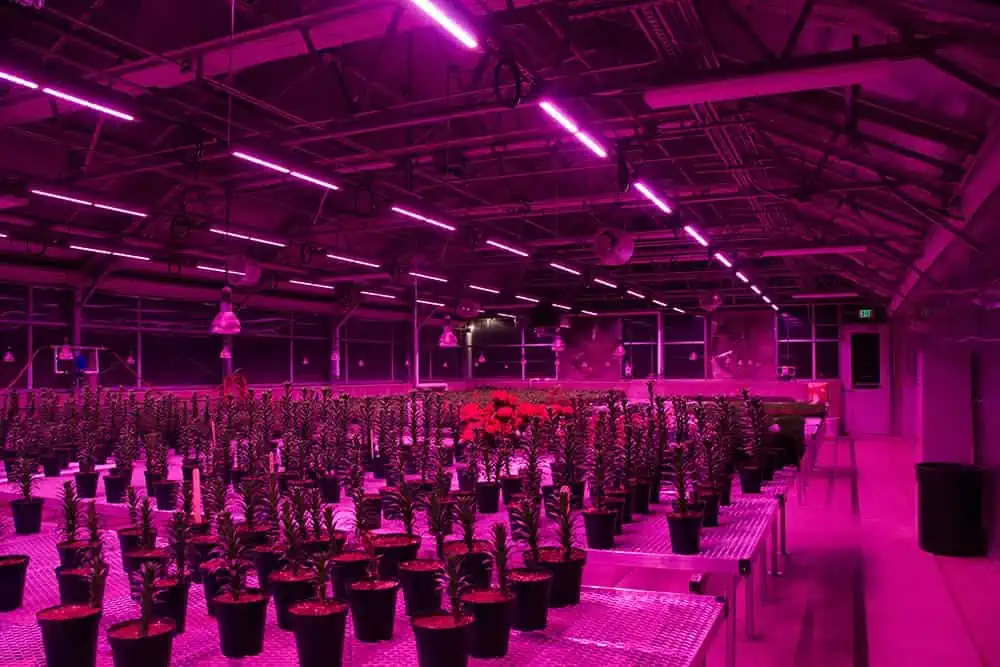
How to Use LED Grow Lights?
LED grow lights are easy to use. All you need to do is correctly install them and follow some regular adjustments as the plants grow. Here is some simple advice following which you can easily use these lights for horticulture-
1. Choose the right fixture
In choosing the LED to grow light consider the type of plant, required wavelength, wattage, area coverage, etc. Different plants have different lighting requirements. So, you should research a bit before choosing any LED grow light. In this case, the best option is to choose an adjustable light system to fit all types or stages of plant growth.
2. Set up your lights
The distance between the light fixture and the plant is crucial as it affects plant growth. Go through the manual book of the fixture to know more about the spacing. However, in terms of installation method, there are many options to choose from, such as-
- Hanging Method: Suspend the light fixture with the help of strong chains or hanging kits. This process offers height adjustability as plants grow.
- Racking or Shelving System: If you have a large garden area with different plant heights, the racking/shelving method is an excellent choice for LED grow light installation. This process ensures plants of all levels get appropriate lighting.
- Vertical setup: When installing LED grow lights on tight spaces or vertical farming, always go for vertical light setup. This minimizes the space requirements and also gives your garden a neat look.
- DIY solution: instead of using any specific method, you can go for a DIY solution to set the grow lights. The ultimate intention is to prove the plants’ required lighting doesn’t matter, whatever the way it is. You can customize wooden shelves, build simple frames, or use hooks and chains to install fixtures.
3. Monitor the temperature of your lights
Though LED lights emit minimal heat, the room can get hot due to a lack of ventilation. This eventually hampers the growth of plants. So, always purchase LED lights with a good heat dispersion system. Besides this, implement a cooling system in the room. Keep the ventilation on point and employ appropriate fanning systems too.
4. Install a timer/set photoperiod
The plant doesn’t need lighting 24/7. Different stages of a plant/type of plant have their own lighting requirements. Keeping this factor in mind, set the timer on the light for auto on/off. So, when the light is turned on, it will mimic daylight, and the plants will activate photosynthesis. Similarly, when the lights are off, they consider it nighttime and stop photosynthesis. In this way, plants will continue growing, maintaining natural growth.
5. Regular maintenance
Clean the grow lights regularly. If there is excessive dust and debris in the fixture, it will hamper light penetration. Besides, checking the light spectrums, maintaining the ventilation system, and monitoring light output are some other maintenance routines to follow.
6. Adapt as plants grow
The light spectrum or wavelength requirements change with the growth of plants. For instance, the vegetative stage requires more blue light, and the flowering stage needs more red spectrum. So, you should adjust the light wavelengths based on this factor. Besides, as the plant grows, you should adjust the distance between the light and the plant.
How Long Should a Plant Grow Light Be Left On
The duration you should keep the grow lights on depends on the plant’s photoperiod. Now what is photoperiod? Photoperiod indicates the day length or the duration of each day when plants absorb light. All plants don’t have the same photoperiod. For example- short-day plants don’t require much daylight in a day. In these plants, nighttime is longer. Most winter plants are short-day plants. Again for long-day plants, more lighting duration is required. That is, you need to keep the LED grow lights on for longer.
| Photoperiod based on plant type | ||
| Type Of Plant | Example | Photoperiod |
| Short Day Plant | Chrysanthemums, kalanchoe, azaleas, and begonias | 12 hours per day |
| Long Day Plant | Seedlings for vegetables and garden flowers | 18 hours per day |
Again, the lighting period also varies with the plant’s growth stage. Usually, the plant’s growth stage is divided into three groups: seeding, vegetative, and flowering/fruiting. The lighting period for each of these stages is as follows-
| Photoperiod for different growth stages of plant | |
| Growth Stage | Lighting Period |
| Seeding stage | 14 to 16 hours of light per day |
| Vegetative stage | 14 to 18 hours of light per day |
| Flowering and fruiting Stage | 12 hours of light per day |
Troubleshooting Common Issues with LED Grow Lights
When using LED grow lights, you may face some common issues. Below I have listed those with ways to solve them-
1. Dim or flickering lights
Dimming or light flickering in LED grow lights can be caused due to defective LED chips. It may be due to overheating, excessive current flow, or for manufacturer default. To solve this issue, do the following things-
- Ensure the river is providing proper current and voltage
- Check the electrical wiring
- Replace the defective LEDs
- Contact an electrician if you can’t fix the issue
2. Loose or damaged connections
If you find half of the fixture is working, but the other half doesn’t, loose wiring can be its cause. The connection of LED grow lights can get loose or damaged over time. This eventually hampers the continuous light flow. Here are the steps to follow if you find any loose connections-
- Tight all the connections
- Reconnect them one by one
- Check if the driver is ok
- If there is any cutout in the wiring, replace them
3. Malfunctioning Controller or Timmers
The LED grow light controller helps you adjust the light intensity, wavelengths, and on/off period according to the plant’s needs. If the controller is not working properly, it will not provide accurate lighting output. This eventually hampers the natural growth of plants. So, follow the below points to solve this issue-
- Double-check the setting of the controller
- Ensure the batteries in the timer or controller is ok
- Reset them to ensure they are accurately connected to the LED grow light
- Replace the device if the above solutions don’t work
4. Spectrum or color issues
Sometimes the LED grow light may not show an accurate color spectrum. It may be due to the manufacturer’s default or wrong purchase. For instance, buying a red spectrum grow light for the vegetative stage will not be effective.
- Purchase LED grow light as per the required light spectrum
- Contact the manufacturer if you have bought the correct product but it doesn’t show accurate results.
- Always purchase LED grow lights from a reliable brand or source.
5. Insufficient light intensity
Another major problem with LED Grow Light is that it sometimes may not provide the desired light intensity. This may be due to using a wrong wattage fixture, or if the distance better the light source and the plant is too far. To solve this issue, follow the below points-
- Purchase LED grow lights based on the intensity requirements of specific plants.
- Ensure you purchase the light with the correct PPFD rating and wattage.
- Try minimizing the distance between the light fixture and the plant to enhance the light intensity. But keep the light heating factor in mind while doing so. The fixtures shouldn’t be placed so close that it damages the plant due to overheating.
FAQs
Blue and red light colors are best for plant growth. The blue light ranging from 400-500 nm is ideal for the vegetative stage of the plant. It is crucial in leaf elongation, root development, and other vegetative growth. On the other hand, red light ranging from 600-700 nm is required for the flowering and fruiting stage of the plant. This light stimulates hormone production to activate budding and fruiting.
Different plants have different light intensity requirements. Again this needs also varies for different growth stages. For instance, the seeding period requires less light intensity but flowering/fruiting requires high Light intensity. However, in general, 1000 to 2000 µmol/m²/s is considered the best light intensity for plants. Or you can go for LED grow lights with a 500 to 1,000-foot-candle range or 15 or more watts per square foot area.
Yes, grow lights work. They are designed to mimic the natural sunlight to influence plant growth. It produces all the light spectrums that encourage plants’ seeding, meditation, flowering, fruiting, and the entire life cycle. Pants absorb light from these grow lights to conduct photosynthesis to produce carbohydrates that help their growth.
Yes, LED lights are excellent for growing. They are available in different light spectrum ranges essential for different plant stages. LED grow lights also offer light spectrum adjustability to fit all plant’s requirements. Apart from all these, they produce minimal heat and have a long lifespan. Besides, the energy efficiency of LED lights is worth-mentioning. You will not need to worry much about the electricity bills with these lights.
The plant uses a light spectrum ranging between 400 nm and 700 nm for photosynthesis. This light spectrum range is called Photosynthetically Active Radiation (PAR). Plants absorb these light spectrums through their chlorophyll to conduct the photosynthesis process.
IR of infrared Light can greatly influence plant growth. Usually, the wavelength of IR ranges from 700-1000 nm. This wavelength stimulates plant height, leaf expansion, and flowering time. Besides, the red wavelength to IR light can affect stem elongation, seed germination, phytochrome activation, and more.
For the vegetative stage of cannabis, an LED grow light with 4000K to 6500K is best. They provide a bluish light tone that influences the plant’s vegetative growth, including leaf and root development.
Color temperature ranging from 2700K to 3000K is best for the flowering stage of cannabis. The red and orange light wavelength falls under this kelvin range. This helps to stimulate flowering hormones and encourage budding in plants.
Incandescent lights can last only for 1000 hours and are highly energy inefficient. They also don’t offer any light wavelength adjustable options. Fluorescent lights, though, are a better option than incandescent yet produce toxic gasses. They can last for hours and have limited light spectrum adjustability options. On the other hand, LED grow lights are highly energy efficient and can last for. Besides, they have many light spectrum adjustment options that fit all plant growth stages. Considering all these factors, you should choose LED grow lights rather than incandescent or fluorescent lights.
The main types of grow lights include- LED grow lights, HPS grow lights, HID grow lights, and fluorescent and incandescent grow lights. Among all these, LEDs are the most popular variant.
The Bottom Line
Grow lights are essential for indoor planting. And in this case, nothing can beat LED technology. Though there are other lighting like HID, incandescent, fluorescent, etc., LED is best. They are slim and compact in design to fit any type of garden. Besides, LED’s heat dispersion, durability, and energy-effective features are worth mentioning.
LED lights offer a different light spectrum for the active development of all plant growth stages. Different types of LED fixtures are used to grow light, like panel lights, T5 lights, strip lights, etc. Each of these is an excellent light choice for plant growth. However, if you are looking for a supplementary light source for horticulture, high CRI Ra98 full spectrum LED strip lights are a great choice.
You can choose tunable white LED strip lights for your garden. The adjustable color temperature ranging from 1800K to 6500K will perfectly fit the plant’s entire life cycle. You can set them to a bluish-cool tone at the vegetative stage and switch to a reddish/orangish warm tone for the flowering stage. Besides, we also offer customization, ODM, OEM facilities, and a five-year warranty. So, if you are looking for reliable strip LED grow lights, LEDYi is here for you!

